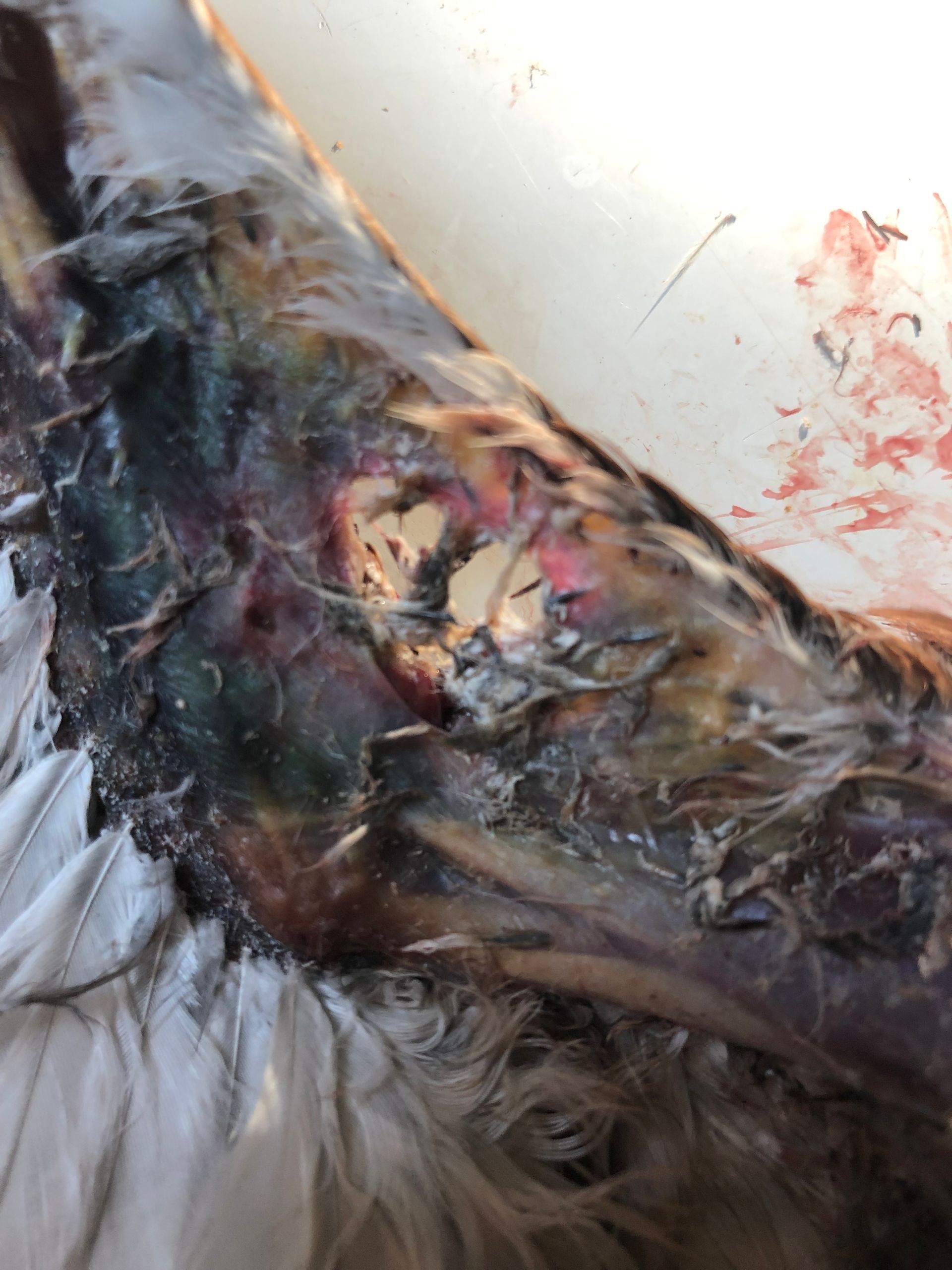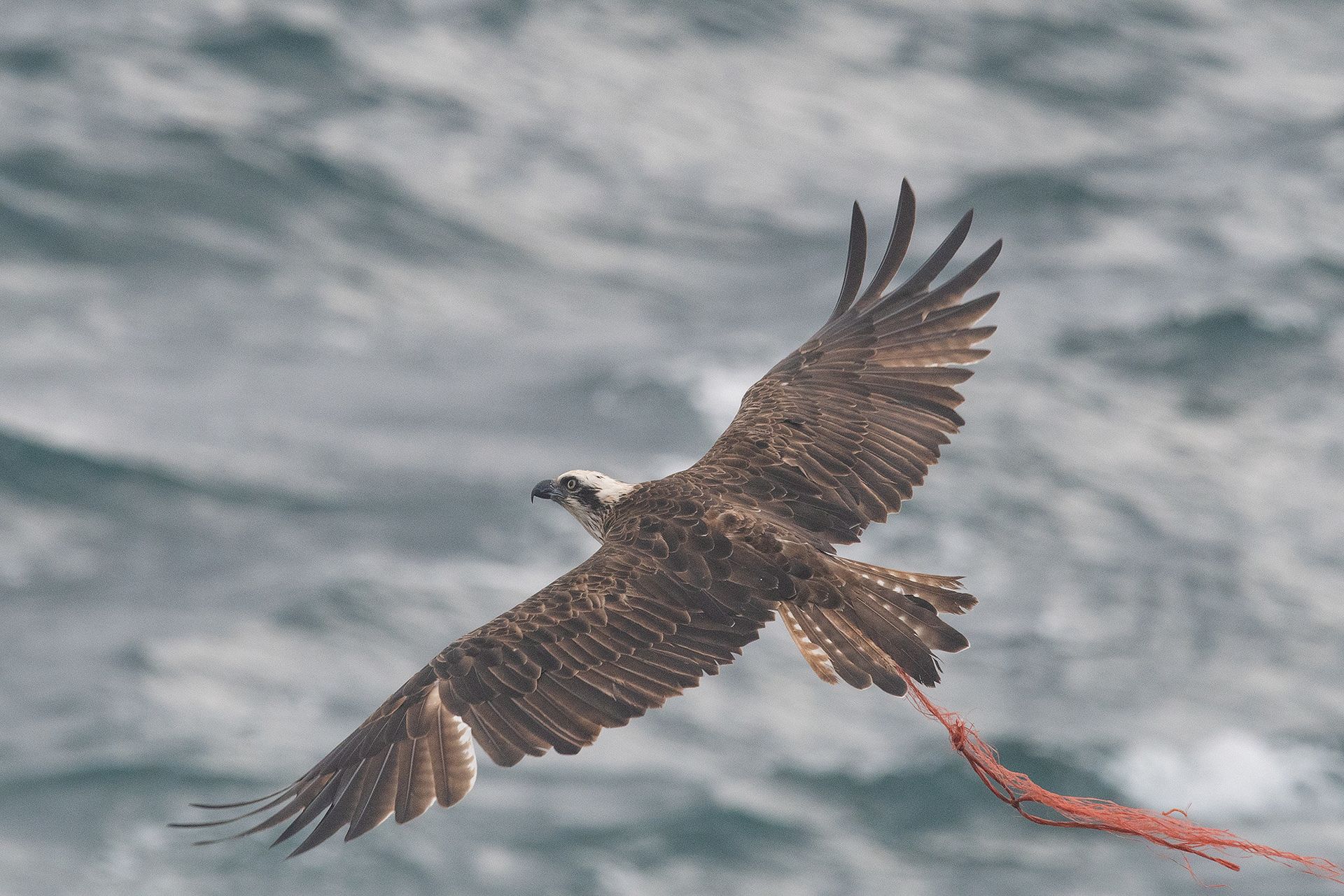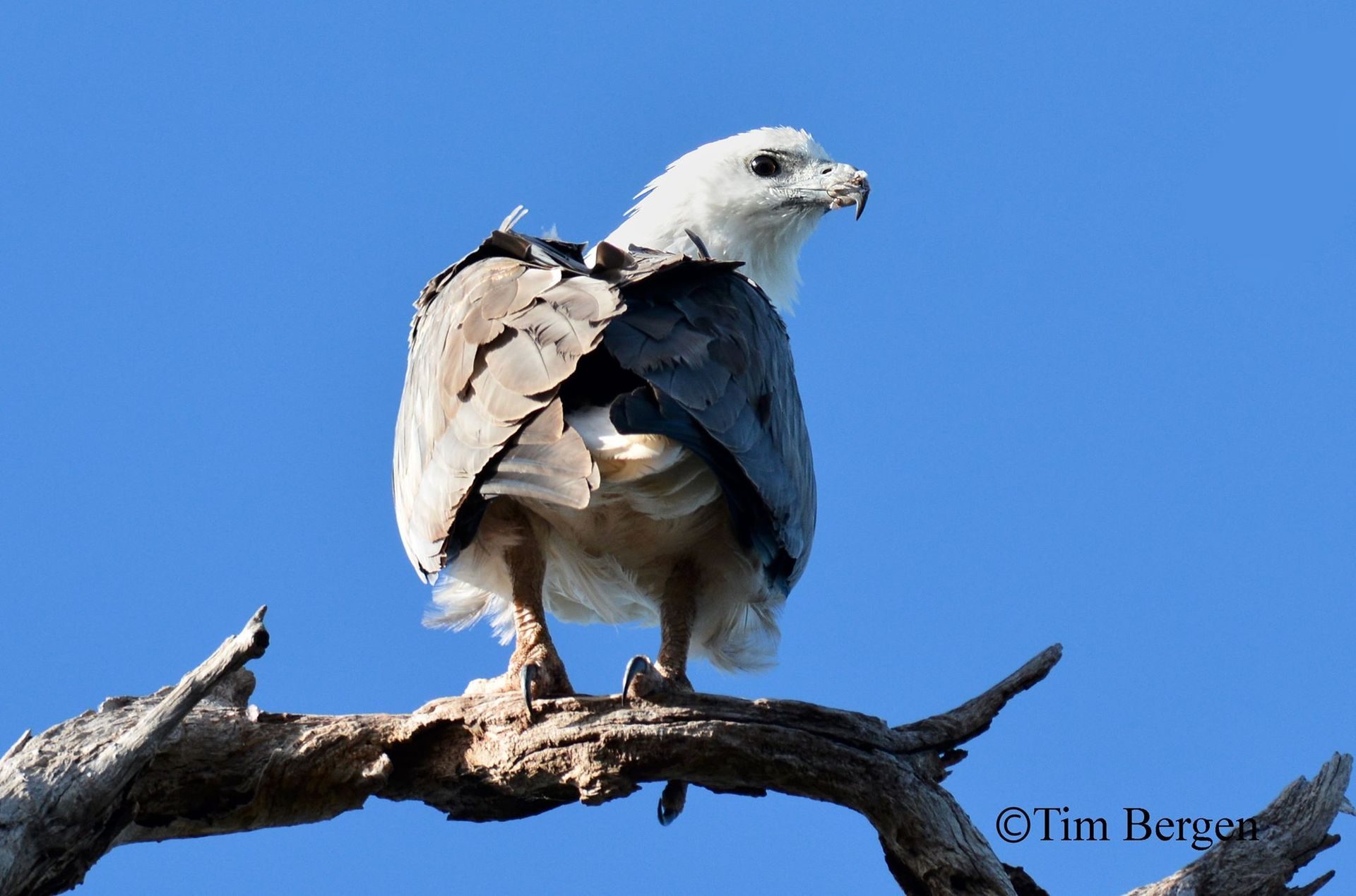THREATS AND
CONSERVATION
Rehabilitation cases highlighting the threats to
Australian raptors.
Photographer: Mark Kelly
ENTANGLEMENT
Entanglement in lines, wires or netting can be devastating for individuals. Constriction injuries cause soft tissue trauma, cutting tendons and restricting blood and nerve supply, and often result in necrosis (death) of toes, feet or wing tips. These injuries are painful and often become infected, and even if the bird survives the injury, they may not be able to fly, walk, perch or hunt, and often starve to death.
Birds entangled in structures such as fences often sustain severe injuries as they struggle to free themselves, particularly on barbed, razor or electrified wire. If trapped, they may suffer dehydration, heat stress or freezing temperatures, and if not found and freed, succumb to predation or starvation.
WARNING - GRAPHIC IMAGES BELOW
This Wedge-tailed eagle found herself entangled in electrified chicken netting over a period of potentially eight hours. Each time the charge built up she was electrified once again. She sustained horrific wounds both internally and externally - a blood test showed that her muscle breakdown enzymes were extremely elevated, a condition known as rhabdomyolysis.
“Sparky” as she was known, was a real favourite to us all. She underwent intensive veterinary and rehabilitation treatment to clean and heal multiple burns, but remained an amazing patient who simply never gave up. As a local bird she was constantly visited by her mate while she stayed in the rehabilitation and free flight aviaries, and when eventually released he was there to greet her and they bred the next season. It should be pointed out that Sparky showed improvement every day despite her pain and just kept on doing everything that could have been asked of her. If the light at the end of the tunnel had not continued to shine brighter every week she would not have been subjected to the treatment she endured.
After realising the damage it could cause, the property owners removed the netting. The chickens that it was used to enclosure kept flying over the top anyway!
Photographer: Adelle Scott (left), Peg McDonald (below)
This is one of many wounds sustained by another wedge-tailed eagle while trying to extricate herself from barbed wire, a wildlife curse. The hole in her wing was big enough to put a hand through. The extent of her wounds and inability to resolve most meant that euthanasia was the only humane response to the young bird’s situation.
Whilst some birds are able to survive barbed wire entanglement, most injuries are sadly too severe to resolve.
Photographer: Peg McDonald
The correct removal process is critical to avoid further damage. If you find a bird of prey in this situation please cover the bird’s head and find a way to support the body if you safely can, then call a listed raptor rehabilitation authority.
Eastern osprey entangled in baling twine on the Central Coast of NSW
Photographer: Gary Dunnett
Eastern osprey entangled in baling twine on the Central Coast of NSW
Photographer: Gary Dunnett
White-bellied sea eagle with a fishing hook piercing the upper beak, unknown outcome
Photographer: Tim Bergen
Fishing equipment is the deadliest threat faced by coastal birds of prey. Discarded nets, hooks, bailing twine, sinkers, lures and other refuse from fishing activity causes injury and death to sea eagles and other aquatic animals who become unwittingly entangled or ingest the gear. Since 2021, the NSW Department of Primary Industries has been addressing the issue with the installation of hook and line bins, installed in fishing hotspots. The bins are designed to allow for correct disposal of fishing line and tackle and are made from 100% recycled material. If these bins are used correctly, they will help reduce the risk of litter making its way out into the environment and reduce the risk of interactions with wildlife.
In the spirit of reconciliation, Australian Raptor Care and Conservation Inc acknowledges the Traditional Custodians of country throughout Australia and their connections to land, sea and community. We pay our respect to their Elders past and present and extend that respect to all Aboriginal and Torres Strait Islander peoples today. We recognise and appreciate the traditional significance and cultural roles birds of prey play in the lives of our First Nations people.








